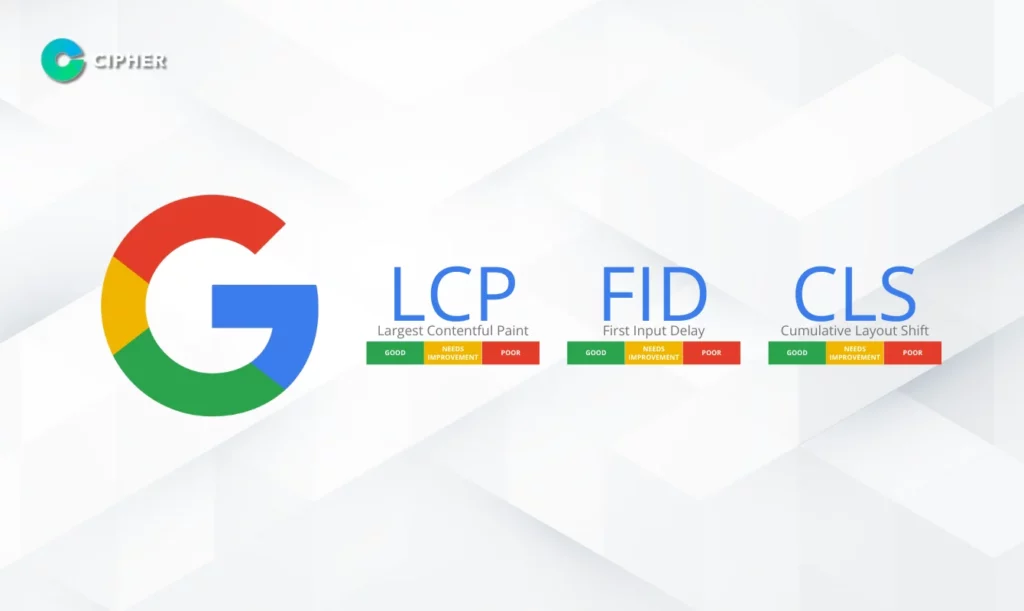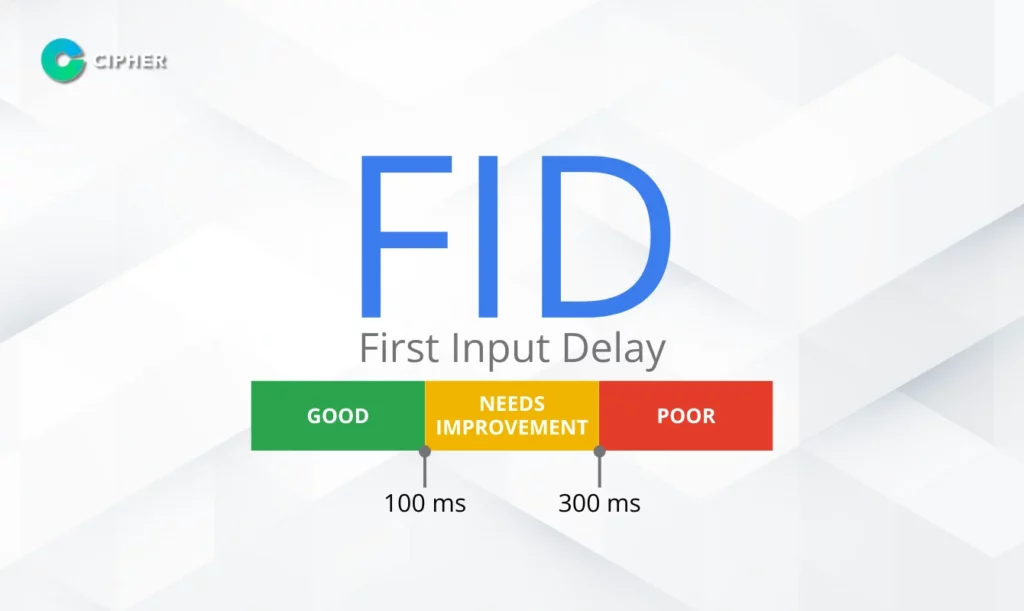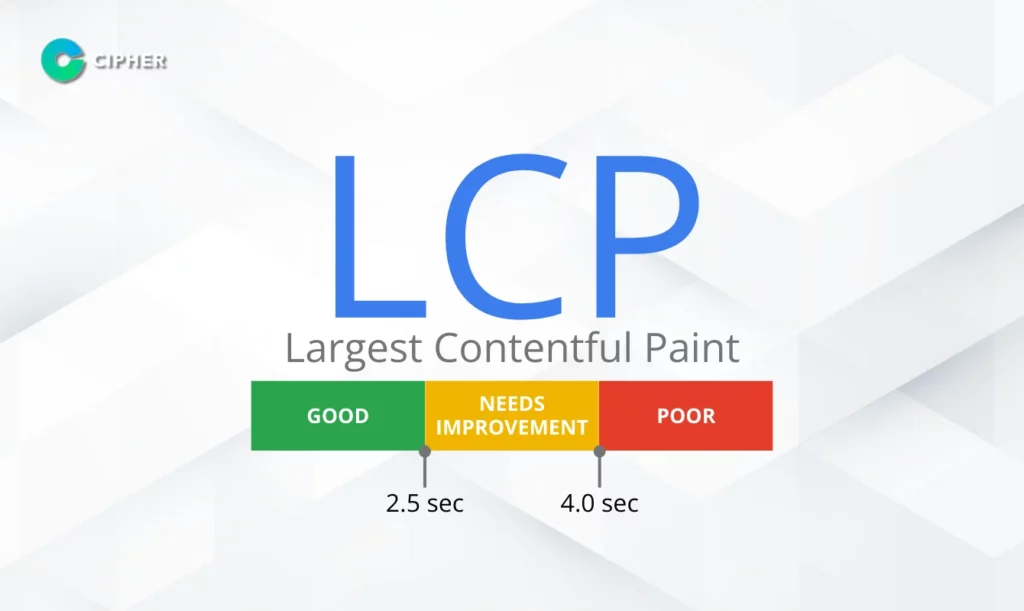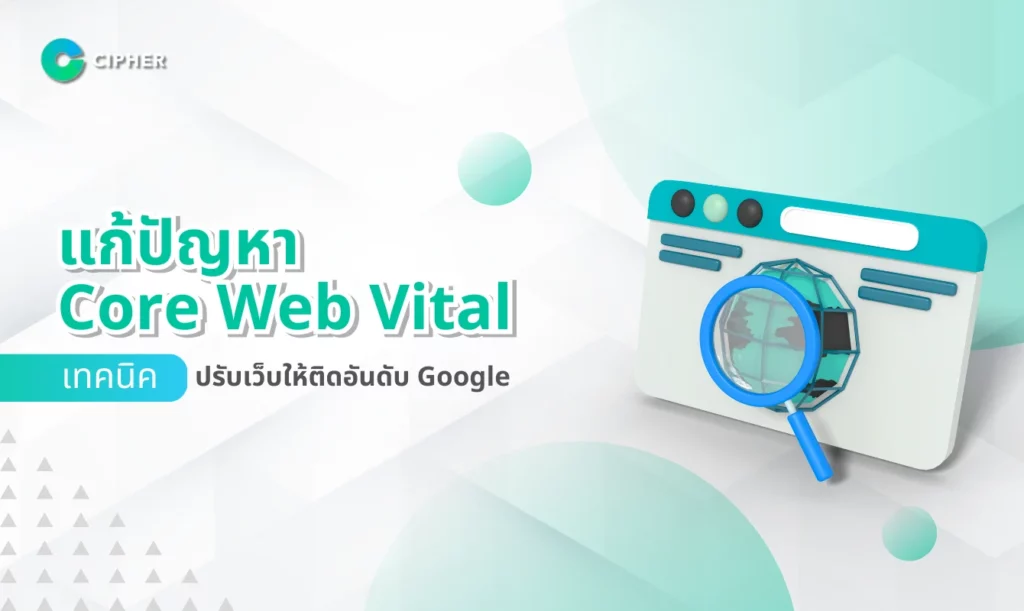Table of Contents
Core Web Vital solutions are a key strategy for those who want the website to be ranked on Google today. Google places more importance on user experience. Using Core Web Vitals as a measure of website quality, website owners need to understand and optimize Core Web Vitals to increase the likelihood of ranking well on search results. It will provide an effective solution to the Core Web Vital problem to leverage your website to meet the requirements of both users and Google’s SEO algorithms.
What is Core Web Vital?

Core Web Vitals is a set of metrics that Google has developed to measure the speed, responsiveness and stability of web users. It is part of the Page Experience factor Google uses to rank search results.
When website owners want to solve the Core Web Vital problem, they need to understand how Google evaluates the site by measuring how real users experience it. When visiting web pages, not only are they measured by Google’s own system, but that’s why it’s important to optimize Core Web Vitals.
Why is Core Web Vitals important to SEO?
Core Web Vitals are important for SEO because it is a direct factor that Google uses to rank websites. The importance is as follows:
- Increase your chances of ranking: A website with a good Core Web Vitals value has a higher chance of ranking than competitors with similar quality content.
- Improve user experience: Core Web Vital solutions improve user satisfaction, reduce bounce rate and increase website uptime.
- Build Reliability: Fast, easy-to-use websites give a good first impression, enhancing brand reliability.
- Increase conversion rate: Experienced users are more likely to become customers.
- Lower SEO costs: Optimizing the Core Web Vital from the start helps reduce the cost of solving long-term problems.
When competitors regularly edit their Web Core Vitals, disregarding site improvement can lower the ranking. Therefore, website owners must realize the importance of editing the Core Web Vital to maintain and develop the ranking on Google.
Components of Core Web Vitals include: Anything?
Core Web Vitals consists of three main metrics that measure the web experience:
First Input Delay (FID)

First Input Delay (FID) is a measure of the speed at which a website responds when a user interacts with a web page, such as clicking a link, pressing a button, or entering information in this form. This metric measures how long it takes from the user to the time the browser responds to that response.
FID standard:
- D: Less than 100 milliseconds.
- Need to update: 100 – 300 milliseconds
- Bad: More than 300 milliseconds
Problems with high FIDs are often caused by JavaScript being too large or complex, processing too heavy, or loading too many scripts simultaneously. The Core Web Vital solution in this section focuses on improving JavaScript performance.
Largest Contentful Paint (LCP)

Largest Contentful Paint (LCP) is a measure of the speed at which most of the content users see on the screen, a measure of how fast a page is loaded, measured from the time it starts loading the page to the largest component that users see, which can be pictures, videos or large blocks of text.
LCP standard:
- D: Less than 2.5 seconds.
- Need to update: 2.5 – 4 seconds
- Bad: More than 4 seconds.
Factors affecting LCP include server response time, JavaScript and CSS-blocked rendering, image and video size, and resource load performance. Core Web Vitalization in this section focuses on accelerating the loading of core content.
Cumulative Layout Shift (CLS)

Calculative Layout Shift (CLS) is a measure of page layout stability, measured by moving or changing the location of components while the page is loading. A high CLS means that the page has scrolling or jumping content, which creates a bad user experience, such as clicking the wrong button because the page is scrolling.
CLS Threshold:
- D: Less than 0.1
- Need to improve: 0.1 – 0.25.
- Bad: greater than 0.25.
The high CLS is often caused by the lack of size of photos and videos, the loading of advertising or external content without pre-reservation, and the addition of dynamic content over existing content. The Core Web Vital revision in this area focuses on stabilizing Layouts.
How to Customize a Web Site Add Core Web Vitals
Site customization to solve Core Web Vital problems must be done systematically, divided by the following main components:
LCP Adjustments
Troubleshooting the LCP to make the site load faster can be done in several ways, such as:
- Improve server response time: use high-performance hosting services or consider using CDN (Content Delivery Network) to distribute the load.
- Improved image files: Compress images to a smaller size without significant loss of quality. WebP file formats are recommended instead of JPEG or PNG because they are smaller.
- Using Lazy Load for Images: Load only the images that appear on the previous screen. The images below will load when the user scrolls down the screen.
- Reduce and manage CSS/JavaScript: Consolidate and shrink CSS and JavaScript files, remove unnecessary code, and manage loading scripts appropriately.
- Use browser caching: Set appropriate caching policies to reduce the reload of frequently used resources.
Effective Core Web Vitalization in the LCP section will help users see the main content of the site faster, increase satisfaction and reduce exit rates.
Adjust FID
Troubleshooting Core Web Vitality in the FID section to make websites more responsive to user interaction faster.
- Divide JavaScript into subsets: Use the Code Splitting technique to load only required code first.
- Reduce Main Thread: Move the long processing to Web Worker so that it does not block the main thread.
Postpone unnecessary script loading: use defer or async for scripts that do not need to be loaded immediately. - Remove unnecessary plug-ins: especially for WordPress sites or other CMS systems that often have more plug-ins than necessary.
- Improved JavaScript performance: Reduce function complexity and avoid costly applications.
CLS Adjustment
Resolving the Core Web Vital problem in the CLS section to make websites more stable. Adjusting the Core Web Vital in the CLS section helps users not get frustrated when the components on the page scroll and facilitate smooth website usage, such as:
- Determine the size of the photo and video: Specify the width and height of the photo and video in HTML code to reserve space in advance.
- Reserve advertising space: If websites display ads, reserve advertising space in advance.
- Avoid adding content over existing content: Structures the content to be loaded from top to bottom, not inserting new content between existing content.
- Use CSS Transform for animation: instead of directly changing the component location.
- Test on a variety of devices: Verify that websites are stable on different devices and screen sizes.
Factors that enhance the web experience are: Anything?
In addition to the core components of Core Web Vitals, there are other factors that enhance the web experience. The Core Web Vital solution should also be considered.
First Contentful Paint
Time to Interactive
Time to Interactive is a metric that measures the time from the start of loading a web page to the time it completes displaying critical components that can respond quickly to user interaction and the main thread does not have long-running heavy tasks. This metric indicates when the web page is fully available. A high TTI value can be caused by a large number of JavaScript loads. This improvement allows users to quickly start various functions on the website. Google recommends a TTI value of less than 3.8 seconds.
Speed Index
Speed Index is a metric that measures the speed at which content is visible during a page load. It is calculated based on the area of the screen where the content is displayed at each point of time, not just on the basis of a component, but on the basis of the display of all content seen by the user. A low Speed Index value indicates that a page has a fast and continuous display of content. This update allows users to feel that the website loads quickly and has continuous display and usage. Google recommends that the Speed Index value be below 3.4 seconds.
Page Performance Scores
Page Performance Scores are aggregated scores that reflect the overall performance of a page based on multiple metrics combined, including Core Web Vitals and other metrics such as FCP, TTI, and other metrics. Speed Index and TBT scores are usually presented in percentage or 0-100 values. In tools like PageSpeed Insights or Lighthouse, high-score websites provide a good user experience in terms of speed, responsiveness and stability.
This score improvement requires that multiple components be considered simultaneously, not just on one side, which helps the website perform better overall, benefiting both the user experience and Google ranking.
Total Blocking Time
Total Blocking Time (TBT) is a value used to measure the amount of time a website is blocked between First Contentful Paint (FCP) and Time to Interactive (TTI), indicating that a user cannot interact with a web page due to a long processing or load.
A tool to monitor Core Web Vitals.
Troubleshooting Core Web Vital starts with analyzing the current state of the site, which can be done using the following tools.
Google Search Console
The Google Search Console is a free tool from Google that allows website owners to check the performance of web pages, provide real-life information, providing an overview of the problems that real-life users encounter with the Core Web Vitals report, especially on how to use them.
- Log in with a Google account: register your site in the Google Search Console and confirm ownership.
- View the Core Web Vitals report: Select the “Experience” menu and click on “Core Web Vitals.” A report will be found that shows the performance of web pages.
- Analysis of the problem: The report displays the problematic pages grouped by problem characteristics for easy resolution.
- Follow up with updates: After resolving the problem, you can ask Google to re-examine the update results.
Google PageSpeed Insights
Google PageSpeed Insights is another tool used to analyze the performance of web pages and provide tips on how to fix them.
- Access PageSpeed Insights: Type the URL of the page to analyze.
- Get analysis results: The tool analyzes web pages and displays scores for both mobile and desktop versions.
- See Core Web Vitals: A detailed report of LCP, FID, CLS, and other metrics.
- Get improvement recommendations: PageSpeed Insights provides specific recommendations for troubleshooting Core Web Vital issues on each side.
- See Field and Laboratory Data: This tool displays both field data and lab data from testing in specific environments.
PageSpeed Insights not only helps identify problems but also prioritizes solutions by showing the expected impact of each remediation. Adjusting the Core Web Vital according to this recommendation will help you focus on the most impactful remediation first.
How to check the Core Web Vitals score
The website itself, of course. It relies on two free tools that people are familiar with. It’s easy to use. You don’t have to learn any new functions and it’s most of the tools that check Technical SEO without complications as follows:
- Google Search Console: Use to view a full overview of the website, which pages have problems. Visit https://search.google.com/search-console/about for the Core Web Vitals menu on the left. See both Mobile and Desktop data for a complete overview of all pages. Do not check one page at a time. For more detailed check, use PageSpeed Insights.
- PageSpeed Insights: It’s the same website that uses to check the normal website speed. Simply enter the domain, press Analyze and wait for the results. Check the metrics below, but do not have to follow everything because if you score 90 or higher, it’s very good.
To resolve the Core Web Vital issue, contact CIPHER today!
Troubleshooting Core Web Vital can be challenging for site owners who do not have in-depth technical knowledge. CIPHER specializes in adjusting the Core Web Vital and is ready to help your site achieve its best results. Our services range from:
- Comprehensive Web Site Performance Analysis
- Google standard LCP, FID and CLS troubleshooting
- Server Updates and CDN Settings
- Image and Media File Configuration
- Upgrading CSS and JavaScript Code
- Post-improvement consulting and follow-up
Our team of experts is ready to provide specific guidance for your site and help you understand how Core Web Vital solutions can help you run your business. Contact CIPHER today to improve your website’s performance!
Summary - Why Core Web Vitals Are Important?
Core Web Vital solutions are key strategies for improving SEO rankings and user experience. Focusing on Core Web Vital not only helps your site rank higher on Google, but also benefits businesses in areas such as increasing conversion rates, decreasing exit rates, and giving visitors a good first impression.
In an era of high online competition that requires techniques to standardize Core Web Vital Update, your website will outperform your competitors and gain an advantage in the Core Web Vitals market. It is not temporary but fundamental to Google’s long-term measure of website quality.
If you want your site to be successful in the long run, be sure to check and resolve the Core Web Vital issues regularly. Contact CIPHER today for help from a team of experienced experts in solving problems and integrated website performance improvement services!
Frequently Asked Questions (FAQs)
How to troubleshoot Core Web Vitals?
The Core Web Vital solution must be implemented in all three main areas: LCP, FID, and CLS, with the following methods:
- Reduce image and video file size: Use high-performance file formats such as WebP for images.
- JavaScript Enhancements: Minimize, Break, Subset, and Prioritize
- CSS Enhancement: Reduce unnecessary CSS size and use Critical CSS.
- Update Server: Use CDN and Update Server Response Time
- Pre-determined component size: Specify image size and other components to reduce layout.
The corrective action should be taken first by analyzing the problem with the greatest impact and then taking a step-by-step approach by checking the results after each corrective action.
How Core Web Vitals Evaluation Failures ?
If the Core Web Vitals evaluation fails, investigate issues affecting LCP, FID/INP and CLS from the PageSpeed Insights or Google Search Console report, then improve by optimizing page loading, reducing unnecessary JavaScript and stabilizing page composition to reduce latency and improve user experience.
Is Core Web Vitals still important?
Core Web Vitals remained very important in 2025. Google is still a major factor in website rankings. The Core Web Vital solution is also an important SEO strategy. As Google continues to emphasize the importance of user experience in ranking algorithms, users expect fast and easy-to-use websites, especially on mobile devices.
How to Update LCP Core Web Vitals ?
Improvements to LCP’s Core Web Vitals can be achieved by minimizing and compressing images. Use faster loading WebP files, enable cache to reduce loading time, and minimize CSS/JavaScript size.





